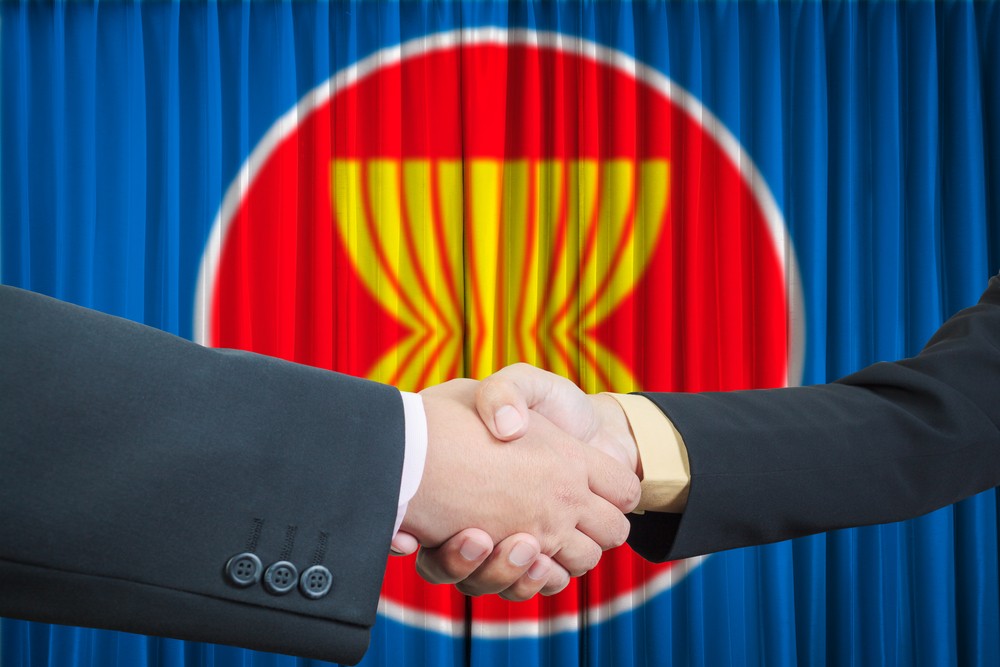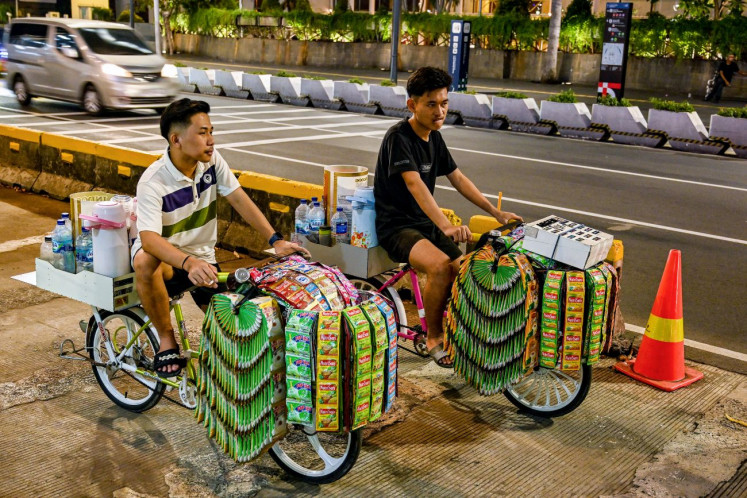Popular Reads
Top Results
Can't find what you're looking for?
View all search resultsPopular Reads
Top Results
Can't find what you're looking for?
View all search resultsBelated engagement after 25 years: towards stronger ASEAN-India ties
India’s centuries-old relations with Southeast Asia could be described as on-again, off-again.
Change text size
Gift Premium Articles
to Anyone
T
he diplomatic calendar of India and ASEAN has been a busy one in the past few months. Last year marked completion of 25 years of India’s Look East Policy. The 15th ASEAN-India Summit held in November 2017 was followed by the ASEAN-India Connectivity Summit in December 2017. Earlier this month the ASEAN-India Pravasi Bharatiya Divas (Indian Diaspora Day) was held in Singapore.
On Jan. 26 the heads of states or governments of all the ten ASEAN countries became chief guests for India’s Republic Day Parade. This increased intensity in engagements highlights the importance that Southeast Asia holds for India in different sectors. It is also shows India’s actions to a great extent are aimed towards making up for the lost time.
India’s centuries-old relations with Southeast Asia could be described as on-again, off-again. These relations have been across economic, political and cultural fields, with the latter remaining the binding factor between both entities. However, strong cultural links did not automatically result in closer ties between India and Southeast Asia in the postcolonial period. While both India and Southeast Asia did work towards deepening engagement and formation of Asian identity, that arrangement did not yield desired results.
The world order established at the end of World War II and India’s own world view were the defining factors in India-Southeast Asia relations. Southeast Asia’s proximity to United States and India’s policy of non-alignment set the limits of India’s relations with the region. The limitations of India’s foreign policy were also the result of strategic thinking not finding sufficient place in policy formulation for a number of decades.
This does not mean that India was completely oblivious to the strategic importance of Southeast Asia. However security challenges faced by India in its neighborhood (wars with Pakistan and China) meant that India was forced to concentrate more at the domestic level and restrict its attention to South Asia only. So a combination of several factors kept India and Southeast Asia apart for a considerable length of time. Even though India had ties with the region there was no real progress which could benefit either party.
It took until the early 1990s for India to review its foreign policy and world view. But this was also because of its economic reforms in 1991. The end of the Cold War allowed India to consider its foreign policy options from a fresh perspective in tune with the changed world order. Opening its economy also in a way opened up India’s foreign policy. Since then India has went on treading uncharted territories.
One of the achievements of India’s changed policy has been its engagement with Southeast Asia. This was not totally unknown territory, however India chose to start with a renewed energy. India launched “Look East Policy” in 1992 to increase its engagements with Southeast Asia in various sectors.
India-ASEAN relations took rapid strides as India was first made a sectoral dialogue partner in 1992, then a full dialogue partner in 1996 and in the same year a member of the ASEAN Regional Forum (ARF). ASEAN has been among the earliest platforms for India to expand its engagements outside of Asia.
Since the end of Cold War the world order has been changing even more rapidly. India’s growing economy increased its interaction with the world. India’s economic rise also pushed it towards asserting its role in the strategic sphere in South Asia and even beyond. While India has been a market and an investment destination for Southeast Asia, then the latter has welcomed India to play a role in the emerging geopolitics of the region.
India’s deepening economic engagements with Southeast Asia have been complemented by equally strong defense ties. The ARF, of which India is a member, deals with security matters. India also participates in ASEAN Defense Ministers’ Meeting Plus and East Asia Summit. Besides, India carries out naval exercises with several Southeast Asian countries. India and ASEAN are also engaged in increasing connectivity with each other. Presently projects are underway to link India’s northeast region by highway to Myanmar and further to Thailand (India-Myanmar-Thailand Trilateral Highway Project). Similarly Kaladan Multimodal Transport Project is also underway to develop maritime connectivity. These projects would not only connect but integrate India with Southeast Asia.
To give a further push to India-ASEAN relations the Look East Policy was reframed as Act East Policy in 2014. While continuing to strengthen cooperation in existing areas, this policy sought to invest more in strategic field. This policy signals India’s step towards actively participating in the security architecture of Indian Ocean, Southeast Asia and what is now called the wider Indo-Pacific region. .
Today’s scenario competition and even rivalry between India and China has been an important factor in shaping India’s foreign and strategic policy. China’s assertiveness in South China Sea has caused Southeast Asia to favor India’s increased participation in the region. Southeast Asia’s efforts towards a rule-based order and India’s efforts towards a multi-lateral world order are concomitant to each other.
India and ASEAN have been connected culturally for centuries. However only in the past 25 years have they been making efforts to realize the full potential of their relations. These overtime engagements would certainly go a long way in converging the interests of both India and ASEAN.
***
Niranjan Marjani is an independent researcher based in Vadodara, India. His research areas are foreign policy, geopolitics, strategic studies, migration and diaspora and race and ethnic studies. His current research includes geopolitics of Indian Ocean and India’s post Cold War foreign policy. He regularly writes columns in newspapers.
---------------
We are looking for information, opinions, and in-depth analysis from experts or scholars in a variety of fields. We choose articles based on facts or opinions about general news, as well as quality analysis and commentary about Indonesia or international events. Send your piece to academia@jakpost.com.










